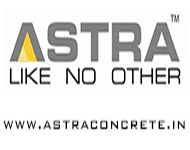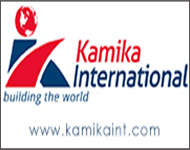- Groundbreaking Ceremony Marks Start of Sh50 Billion MTRH Construction Project
- TANROADS-World Bank Alliance Powers Massive Road and Airport Upgrades Across Tanzania
- Kenya Breaks Ground on Sh5 Billion China-Kenya International Commerce Center in Nairobi
- Construction Begins on $2.15 Billion Uvinza–Musongati Railway Project
- Kenya Secures Chinese Funding for Sh5 Billion Nithi Bridge Reconstruction
- Construction Nears for ELCT Facility Backed by Samia’s 250 Million Boost
- KeNHA Kicks Off Construction of Major Kenya-South Sudan Road Project with AfDB Support
- Tanzania Government Allocates 100 Billion Shillings for Bridge Constructions in Lindi
- $46 Million Deal Signed for Crucial Isiolo-Mandera Road Construction Project
- Tanzania Government Set to Sign Agreement for Dodoma Stadium Construction
STAG designs innovative student accommodation
One company, STAG, has responded to the need for efficient and cost-effective student accommodation by focussing on the students themselves and creating innovative solutions.
While campuses are expanding, taking on more students and adding new departments, the one area of university life that is lagging remains the issue of student accommodation.
Student-centred solutions
Chief executive officer of STAG Student Lodge, John Schooling, reckoned it needed a fresh approach. First, the design of the residences needed better to reflect the students' living requirements. Second, he decided that traditional brick and mortar construction took too long and was too expensive for most universities.
"We wanted an optimal architectural design that ensured every square meter of the building was designed specifically for the needs of the student," said Schooling. "So, we placed the student at the centre of the design process and for everything we did, we asked the question, 'How does this affect the student?'"
An affordable alternative
Schooling then explored a number of building methods with two things in mind: it needed to cost less and be time effective: "Historically, the cost of student accommodation was very expensive. The national norm is around R240,000 per bed. That, for a lot of universities, was unaffordable. So we looked around, for a method out there that was not only cheaper than bricks and mortar but better and which we could apply to the South African context."
They found the answer in lightweight steel structure technology that first emerged in the 1950s. Frame construction as a base building technology has been around for years (using wood) but lightweight steel-framing techniques have become the dominant means of construction worldwide. STAG has been using the technology in South Africa for more than five years.
"We design to what we call a 'rational design code' and municipal planning departments have no problem with it. The new residence at the Stellenbosch University's Tygerberg campus, which hosts the Faculty of Medicine and Health Sciences, took 30 days to get through council," says Schooling.
Saving time, saving money
And, as Schooling points out, there are other timesaving efficiencies: "We can build in 60% of the time it would normally take to build using bricks and mortar. For example, we started the Tygerberg residence in August. Our contract required an end of December completion - five months. And we did it. The first intake of students moved in on 1 January. It would have taken another six months if we'd used normal construction methods."
It's an adage but true: you save money when you save time. "Time is our most expensive commodity, and when we save time then you get a return on your investment much quicker plus your actual holding costs while constructing the building are reduced," says Schooling.
Green construction for the future
The cladding used on the frames is the only imported element of the technology, accounting for 12% of any development's total cost. Schooling describes it as "the best cladding in the world, with very high acoustic and thermal qualities", important factors when you are striving to achieve a sustainable and energy-efficient structure.
"Our standard approach is that our buildings must be as green as possible. We install heat pumps that reduce electrical use by 35%. Or we use a combination of heat pumps and solar panels that can reduce electricity use by as much as 80%. If we just use solar it reduces it by 50%. And we use LED lights throughout," says Schooling.
Schooling thinks that a combination of inertia and set-in-one's-way thinking contributed to the slow adoption of the technology: "In the USA, high-rises are seldom built with bricks and mortar. Even 100-storey skyscrapers are built this way."
Here in South Africa, the innovative building technology has made its mark and is destined to become the dominant building method. "It is time- and cost-effective, very green, maintenance is minimal and it generates very little waste. Over the next five years this type of construction will take off," concludes Schooling.
Source : bizcommunity.com
Posted on : 30 Nov,-0001
Buildmart is Africa's leading directory and market news website for the building and construction industry | Kenya | Tanzania | Rwanda | Ethiopia
Exhibitions In Africa
- 27th Buildexpo Kenya 2026
KICC, Nairobi, kenya
08 - 10, July 2026 - 11th Afriwood Kenya 2026
KICC, Nairobi, kenya
08 - 10, July 2026 - 11th LightExpo Kenya 2026
KICC, Nairobi, kenya
08 - 10, July 2026 - 10th Minexpo Africa 2026
KICC, Nairobi, Kenya
08 - 10, July 2026 - 27th Buildexpo Tanzania 2026
Diamond Jubilee Expo Center, Dar-es-Salaam, Tanzania
23 - 25, Sep 2026 - 10th Afriwood Tanzania 2026
Diamond Jubilee Expo Center, Dar-es-Salaam, Tanzania
23 - 25, Sep 2026 - 10th LightExpo Tanzania 2026
Diamond Jubilee Expo Center, Dar-es-Salaam, Tanzania
23 - 25, Sep 2026 - 10th Minexpo Tanzania 2026
Diamond Jubilee Expo Center, Dar-es-Salaam, Tanzania
28 - 30, Oct 2026





















